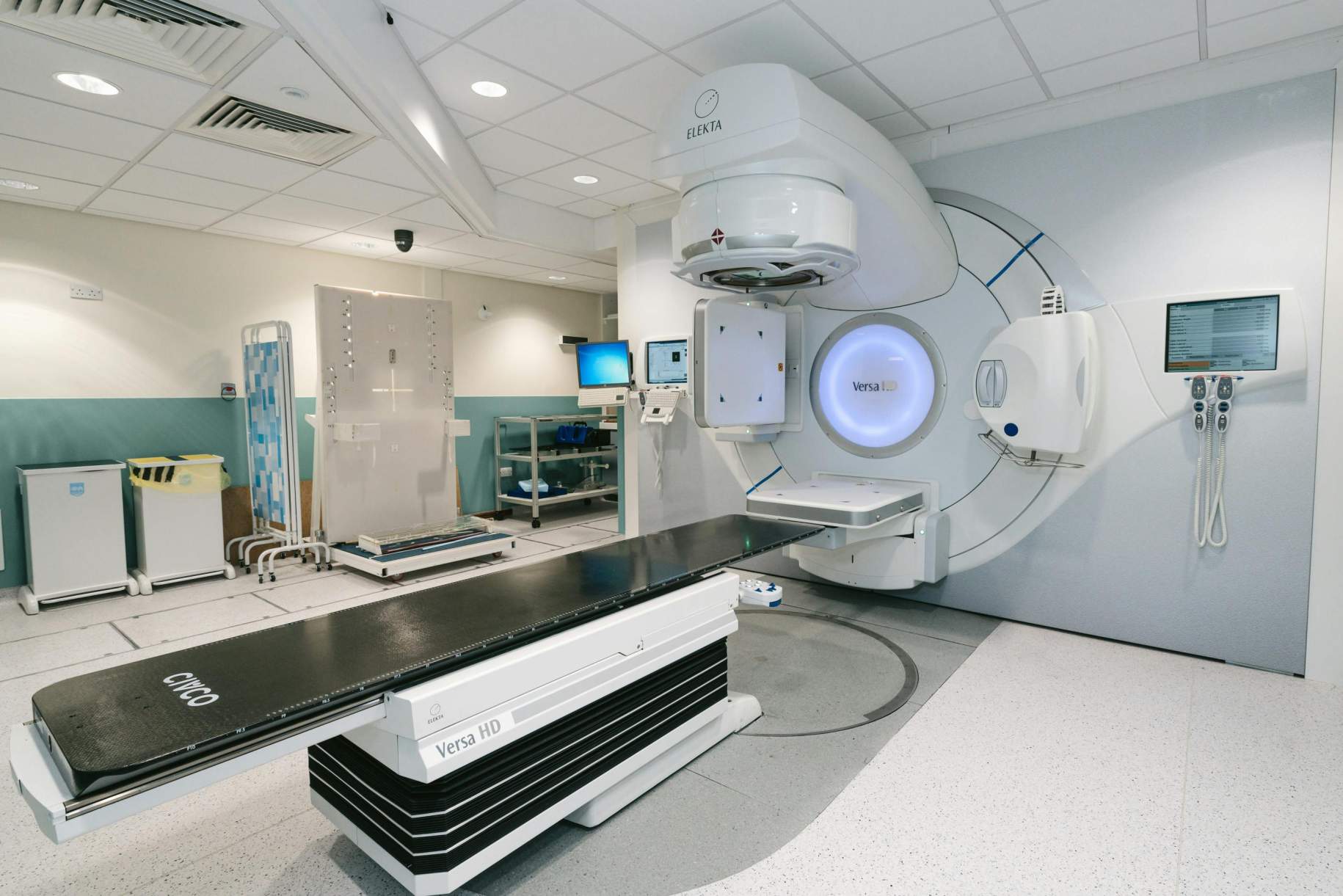Radiation Therapy for Brain Metastases


Brain metastases occur when cancer cells in the body travel to the brain. This can happen in various types of cancer, including lung, breast, melanoma, and others.
Brain metastases can significantly impact one’s quality of life and prognosis. This blog aims to empower you with knowledge and offer clarity about your treatment options.
What is Radiation Therapy and How Does It Work?
Radiation therapy plays an important role in the treatment of brain metastases. It uses high-energy radiation to target and damage the DNA of rapidly dividing cells like cancer cells.
This stops cancer cells from growing and dividing. The process is designed to maximize the impact on cancer cells while minimizing damage to surrounding healthy tissues.
What Are The Types Of Radiation Therapy For Brain Metastases?
Whole Brain Radiation Therapy (WBRT)
Whole Brain Radiation Therapy (WBRT) treats the entire brain with radiation. Here is what WBRT involves:
- Simulation: Before starting WBRT, you will undergo a simulation session where the treatment team determines the exact positioning to accurately target the tumor. Imaging techniques, such as CT scans or MRI, help your care team to plan the treatment.
- Treatment Planning: Oncologists use specialized software to plan how radiation will be targeted throughout the entire brain while minimizing exposure to surrounding healthy tissues.
- Treatment Sessions: WBRT is typically delivered in small daily doses over the course of several weeks. The total dose and the number of sessions depend on the size and location of metastases, as well as your overall health.
- Treatment Delivery: During the treatment, you will lie on a table while a machine delivers the radiation. The radiation beams are shaped to cover the entire brain while avoiding surrounding critical structures as much as possible.
Why should you have your surgery with Dr. Cohen?
Dr. Cohen
- 7,500+ specialized surgeries performed by your chosen surgeon
- More personalized care
- Extensive experience = higher success rate and quicker recovery times
Major Health Centers
- No control over choosing the surgeon caring for you
- One-size-fits-all care
- Less specialization
For more reasons, please click here.
Stereotactic Radiosurgery (SRS)
Stereotactic Radiosurgery (SRS) is not actually a surgical procedure. It is a non-invasive technique that delivers a concentrated dose of radiation to a specific target within the brain while minimizing exposure to surrounding healthy tissue. Here is what you can expect with SRS:
- Imaging and Planning: Imaging techniques such as CT scans or MRI are used to precisely locate the tumor and create a detailed treatment plan.
- Frame or Mask: A rigid head frame or a custom-fitted mask may be used during treatment. This helps keep your head still, so the radiation targets only the area where it’s needed.
- Radiation Delivery: During your treatment, multiple beams of radiation converge at the tumor site, maximizing the dose to the cancer cells while minimizing exposure to your healthy tissue.
- Number of Sessions: SRS is often delivered in a single session or a few sessions. The high dose of radiation is delivered precisely, so the treatment is completed relatively quickly.
- Outpatient Procedure: SRS is typically performed on an outpatient basis, so you can often go home the same day and resume your normal activities shortly after treatment.
The choice between WBRT and SRS depends on the characteristics of brain metastases and your overall health and treatment goals. WBRT is more suitable for scattered tumors, while SRS works best in cases where tumors are few in number and can be easily distinguished from your healthy tissue.
The decision involves careful consideration of the balance between treatment effectiveness and potential side effects. Your treatment team will help you to make this decision with the aim of achieving the best possible outcome and improving your quality of life.
What Are The Side Effects Of Radiation Therapy?
Like any medical treatment, radiation therapy comes with associated risks. These risks can vary based on your individual situation and may be acute or long-term. These are common risks, along with tips to help manage these effects:
- Cognitive Changes: WBRT can sometimes lead to changes in memory, attention, or other cognitive functions. Advances in treatment planning are helping to minimize cognitive effects. If you notice any changes, it’s important to discuss them with your healthcare team.
- Hair Loss: Radiation therapy, including WBRT, can lead to hair loss, especially in the area being treated. Your hair will typically grow back after the treatment ends.
- Fatigue: Feeling tired is common during radiation therapy. Listen to your body, get adequate rest, and try to engage in light physical activity as you’re able.
- Skin Reactions: Radiation can sometimes cause skin reactions, such as redness and irritation, in the treatment area. Proper skincare and following your medical team’s recommendations can help soothe these reactions.
- Risk of Secondary Cancers: Radiation therapy can also affect healthy cells and may slightly increase the long-term risk of developing secondary cancers. The benefits of treating the primary cancer and brain metastases typically outweigh the long-term risk of secondary cancers.
- Nausea and Vomiting: WBRT can lead to nausea and vomiting. Your doctor can prescribe medications to manage this. Following a recommended diet can also be beneficial.
- Swelling and Edema: Focused treatments like SRS may cause a temporary increase in swelling in the treated area. Medications are available to help reduce this swelling.
The response to radiation therapy can vary. You may experience minimal side effects, or you may be more sensitive.
Treatment plans are tailored to your specific situation, and close monitoring by your care team during and after treatment helps in promptly identifying and managing emerging issues.
Key Takeaways
- Radiation therapy is a powerful treatment for brain metastases, involving the use of high-energy radiation to damage the DNA of rapidly dividing cells like cancer cells.
- WBRT is more suitable for treating widespread brain metastases, while SRS is a precise option for well-defined tumors. Your healthcare team will discuss your options with you and design a personalized treatment plan.
- Some side effects can include cognitive changes, hair loss, fatigue, and skin reactions. Your healthcare team can help you to manage any side effects you may experience.











